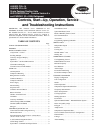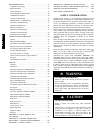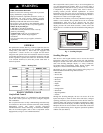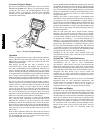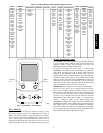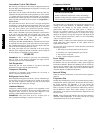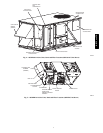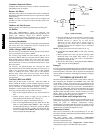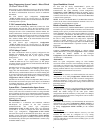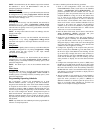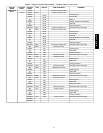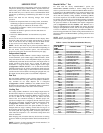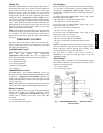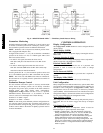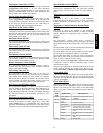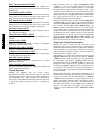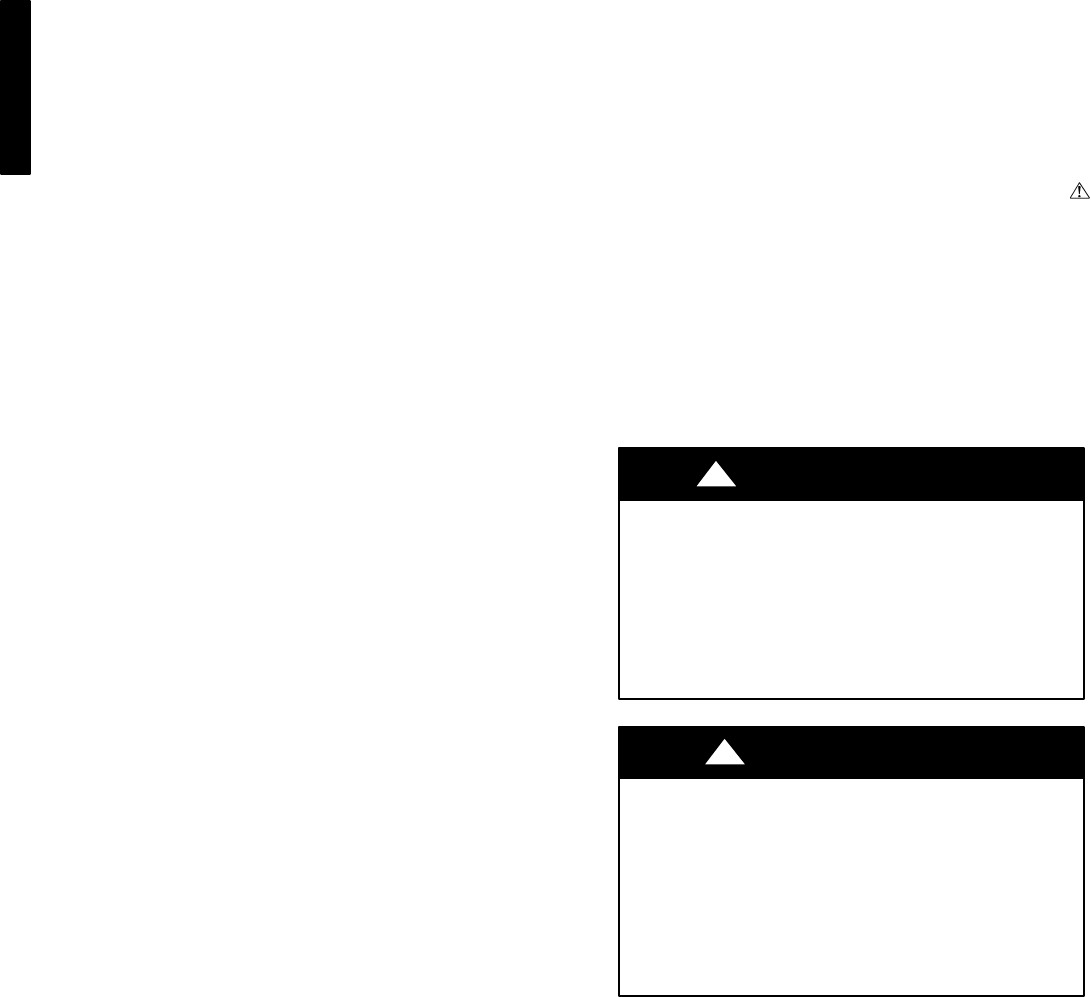
2
TROUBLESHOOTING 37..............................
Complete Unit Stoppage 37............................
Restart Procedure 37..................................
Alarms and Alerts 37.................................
Control Module Communication 44......................
Communication Failures 44............................
Cooling Troubleshooting 45............................
Humidi−MiZer Troubleshooting 46....................
Economizer Troubleshooting 47.........................
Heating Troubleshooting 48............................
Phase Loss Protection 51..............................
Thermistor Troubleshooting 51.........................
Transducer Troubleshooting 52.........................
Forcing Inputs and Outputs 52..........................
MAJOR SYSTEM COMPONENTS 55....................
General 55.........................................
Main Base Board (MBB) 71............................
Economizer Control Board (ECB) 73.....................
Integrated Gas Control (IGC) Board 75...................
Low Voltage Terminal Strip (TB1) 76.....................
Scrolling Marquee Display 77..........................
Accessory Navigator Display 77.......................
Carrier Comfort Network (CCN) Interface 77.............
EnergyX 78........................................
Field−Installed Accessories 79..........................
SERVICE 82.........................................
Cleaning 82........................................
Lubrication 84......................................
Evaporator Fan Service and Replacement 85...............
Evaporator Fan Performance Adjustment 86...............
Evaporator Fan Belt Tension Adjustment 86...............
Condenser−Fan Adjustment 87..........................
NOVATION Heat Exchanger Condenser
Service and Replacement 87............................
Verify Sensor Performance 87..........................
Economizer Operation During Power Failure 87............
Evacuation 87.......................................
Refrigerant Charge 88.................................
Gas Valve Adjustment (48PG and 48PM) 91...............
High Altitude (48PG and 48PM) 92......................
Main Burners (48PG and 48PM) 92......................
Filter Drier 93.......................................
Protective Devices 93.................................
Relief Devices 93....................................
Control Circuit, 24−V93..............................
Replacement Parts 93.................................
Diagnostic LEDs 93..................................
EnergyX 93........................................
APPENDIX A − LOCAL DISPLAY AND
CCN TABLES 94.....................................
APPENDIX B − CONTROL MODES WITH
Humidi−MiZer SYSTEM AND ECONOMIZER 112........
APPENDIX C − START−UP DATA 113...................
APPENDIX D − ADDITIONAL START−UP DATA 169......
CONTROL SET POINT AND CONFIGURATION LOG 180...
INDICATE UNIT SETTINGS BELOW 180................
UNIT START−UP CHECKLIST 188......................
SAFETY CONSIDERATIONS
Installation and servicing of air-conditioning equipment can be
hazardous due to system pressure and electrical components. Only
trained and qualified service personnel should install, repair, or
service air-conditioning equipment. Untrained personnel can
perform the basic maintenance functions of replacing filters.
Trained service personnel should perform all other operations.
When working on air-conditioning equipment, observe precautions
in the literature, tags and labels attached to the unit, and other
safety precautions that may apply. Follow all safety codes. Wear
safety glasses and work gloves. Use quenching cloth for unbrazing
operations. Have fire extinguishers available for all brazing
operations.
Follow all safety codes. Wear safety glasses and work gloves. Have
fire extinguisher available. Read these instructions thoroughly and
follow all warnings or cautions attached to the unit. Consult local
building codes and National Electrical Code (NEC) for special
requirements.
Recognize safety information. This is the safety−alert symbol
.
When you see this symbol on the unit and in instructions or
manuals, be alert to the potential for personal injury.
Understand the signal words DANGER, WARNING, and
CAUTION. These words are used with the safety−alert symbol.
DANGER identifies the most serious hazards which will result in
severe personal injury or death. WARNING signifies a hazard
which could result in personal injury or death. CAUTION is used
to identify unsafe practices which may result in minor personal
injury or product and property damage. NOTE is used to highlight
suggestions which will result in enhanced installation, reliability, or
operation.
ELECTRICAL SHOCK HAZARD
Failure to follow this warning could cause personal
injury or death.
Before performing service or maintenance operations
on unit, turn off main power switch to unit and install
lockout tag. Ensure electrical service to rooftop unit
agrees with voltage and amperage listed on the unit
rating plate.
!
WARNING
UNIT DAMAGE HAZARD
Failure to follow this caution may cause equipment
damage.
This unit uses a microprocessor−based electronic control
system. Do not use jumpers or other tools to short out
components or to bypass or otherwise depart from
recommended procedures. Any short−to−ground of the
control board or accompanying wiring may destroy the
electronic modules or electrical components.
CAUTION
!
48/50PG and PM



